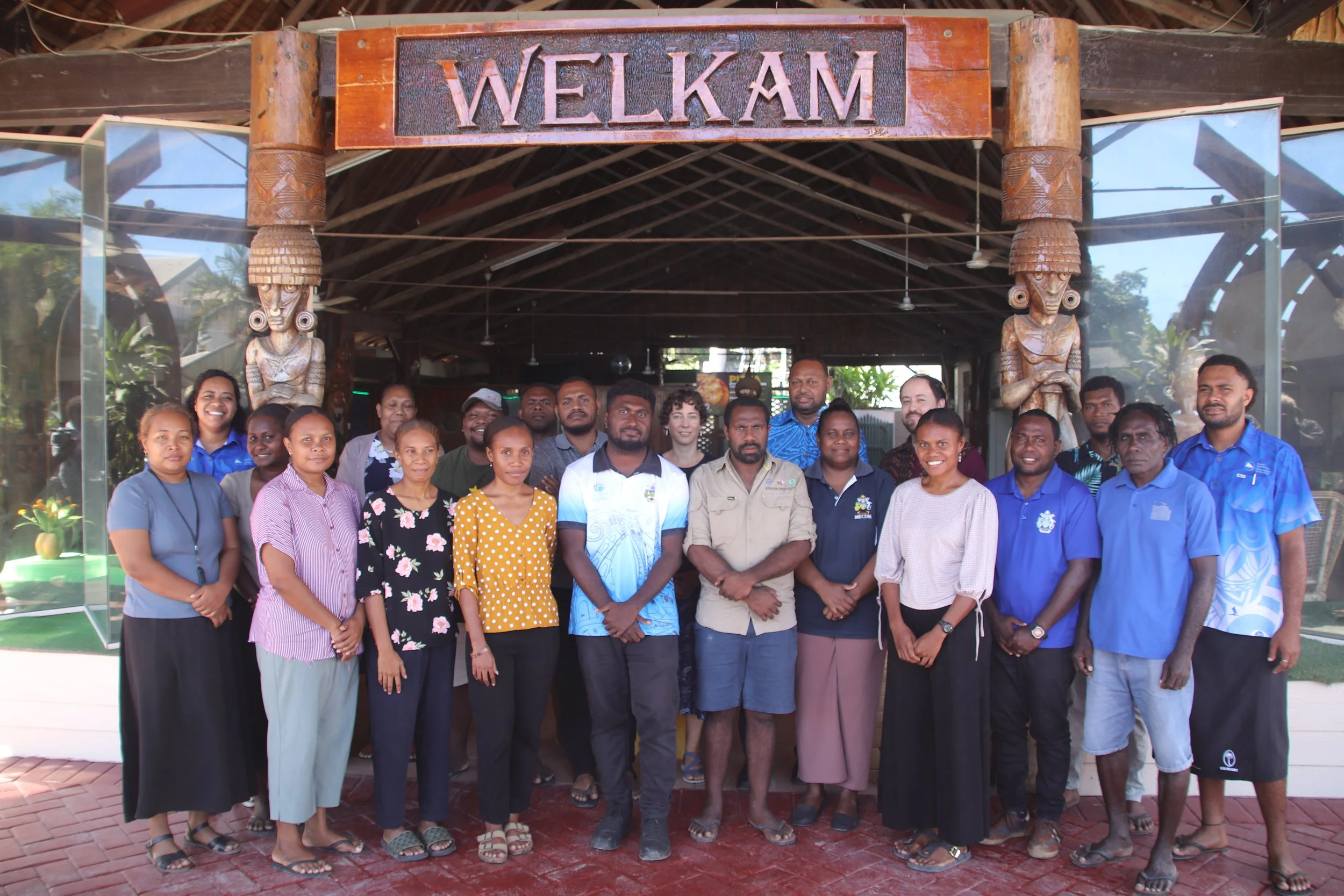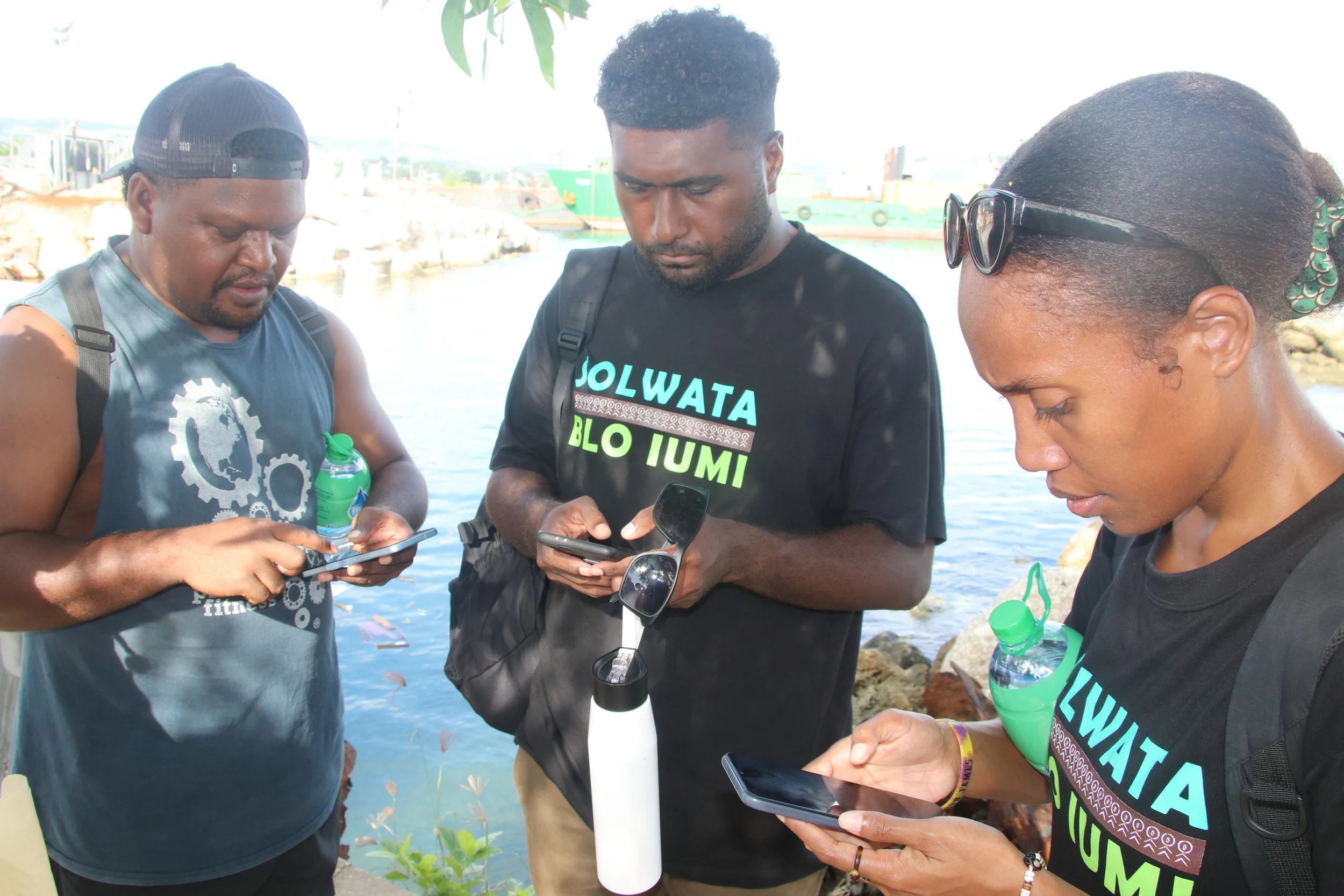GIS and remote sensing mapping to strengthen coastal conservation efforts in Solomon Islands
5 May 2025, Honiara: A week-long training on using open-source GIS tools and remote sensing satellite data from SPC's Digital Earth Pacific (DE Pacific) will now enable Solomon Islands government officials and researchers to better map, monitor and protect seagrass and mangrove ecosystems.
The training, conducted as part of the Management and Conservation of Blue Carbon Ecosystems (MACBLUE) project, brought together participants from government and academia to bridge a vital knowledge gap in environmental monitoring data collection and analysis.
“I have a very basic knowledge about GIS, but not QField [for GPS field data collection], to extract the field data. The mapping tool is very useful, especially in an academic institution where we are dealing with research and trying to come up with curriculum guidance for students,” said Tracey Vunagi, an Environmental Management lecturer at the Solomon Islands National University.
“By using this free tool, it gives us the opportunity to collect accurate data from the field,” Vunagi added.
This training marked a significant advancement for the Environment Conservation Division. Agnetha Vave, Karamui, Chief Conservation Officer, shared her perspective on how the training would provide officers with the necessary skills to collect data from communities to support work with provincial governments, reducing costs and improving data collection.
“Mapping is a necessary tool when it comes to the protection of ecosystems. We have to know where the seagrasses and mangroves are to be able to come up with management plans.”
“Having access to updated information showing trends, changes, losses of mangroves and where the mangrove distributions are enables proper, updated advice to management that can influence a lot of this day-to-day decision-making. Now, I am looking forward to having this updated mangrove and seagrass information that can help us with our work,” she added.
Ministry of Fisheries and Marine Research Principal Research Officer reflected on the value of integrating Geographic Information Systems (GIS) and remote sensing satellite data into fisheries management.
“This training is very resourceful and helpful in terms of managing areas that are spawning habitats for fish, especially when putting together community-based resource management and how we can implement mangrove management with the use of these maps,” shared Jasmine Rahi.
The workshop, facilitated by the Pacific Community (SPC) Earth and Ocean Observation Team, continues a skills transfer series already held in Papua New Guinea. Future workshops are scheduled for Fiji and Vanuatu.
SPC’s Earth and Ocean Observation Technical Officer Elenoa Biukoto highlighted that the workshop provides technical skills transfer to partners in the Solomon Islands Government Ministries and the Solomon Islands National University to map better, monitor, and plan actions for the management of seagrass and mangrove ecosystems at a national scale.
“This access to valuable data reveals a significant opportunity to improve data quality, particularly through projects like MACBLUE. These efforts help map seagrass populations and mangrove extents, which are critical for long-term monitoring and conservation.”
“We hope that through the integration of our workflow into the open-source tools being used during the workshop, more technical and analytical people can develop proper outputs and results using accessible data with the help of the Digital Earth Pacific platform.” Biukoto shared.
This article was originally posted on the SPC website.



